Saturday, August 9, 2025
Today was another travel day, this time from Lima to our lodge along the Amazon River.
We began the morning with variable-temperature showers (mostly cold). Apparently some plumbing issues in this new hotel still need to be resolved. However, this hardship was more than offset by an excellent buffet breakfast at the hotel restaurant. After packing our smaller bags for the Amazon tour, we met José, the Odyssey representative, and John, a fellow Wolftrekker, in the lobby
José carefully tagged our large suitcases, which a porter took to be transferred to the hotel we’ll be staying at after returning from the Amazon. With only our lighter bags in hand, we followed José on foot to the airport. There, he assisted us with checking our luggage and escorted us to the security line, where we said our goodbyes.
Once through security, Jane and I took some time to explore the newly opened shopping and dining area in the terminal at Jorge Chávez International Airport. We then followed a distinctive blue path along a dazzling corridor that led us to Terminal B. After a short wait, we boarded a shuttle bus that took us across the tarmac to our LATAM Airbus A320.
—— Jorge Chávez International Airport ——
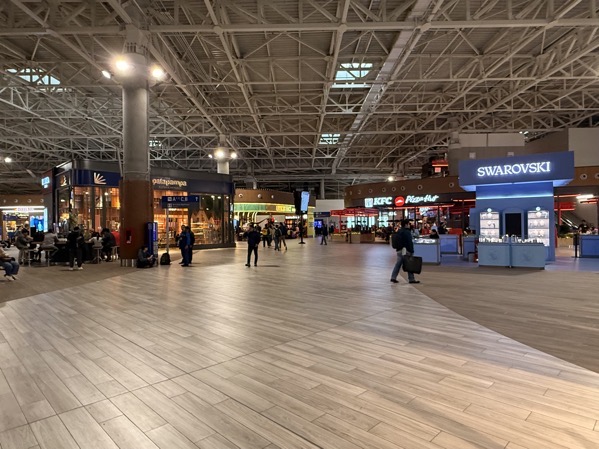
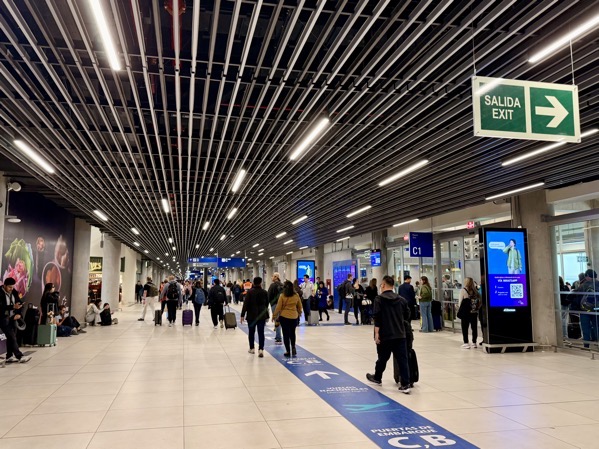
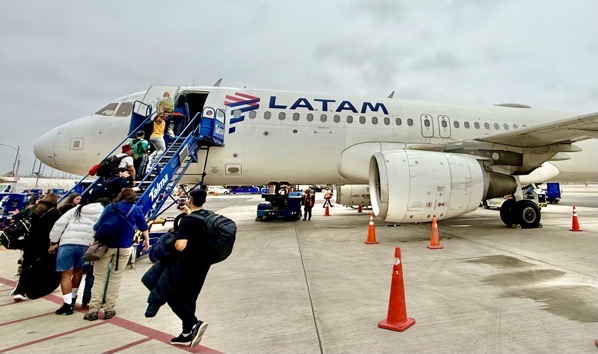
The nearly two-hour flight went smoothly, and after retrieving our small bags at the modest Iquitos airport, we were greeted by German, our Odyssey guide for the next four days. The four of us boarded a large, comfortable tour bus. My first impression of Iquitos was shaped by the swarm of three-wheeled, open-air vehicles—called motocarros or tuk-tuks—which serve as the city’s most popular mode of transportation. Each has a canopy-covered driver’s seat up front and a bench in the back for two passengers. They were everywhere.
German, our informative and friendly guide, led us on a brief city bus tour as we wound our way toward the boat docks. Iquitos, with a population of over half a million, sits deep in the Amazon Rainforest and is completely cut off from the rest of Peru by road—reachable only by air or river. It is surrounded by several major bodies of water: the Amazon River, the Itaya River, the Nanay River, and Lake Moronacocha.
The city drive lasted about 40 minutes. Along the way, we passed the Plaza de Armas, another city park, the Iron House (Casa de Fierro), and numerous once-grand homes from the rubber boom era. Many featured beautiful architectural details and colorful azulejos (ceramic tiles). These mansions were built in the late 1800s and early 1900s by wealthy rubber barons—many of them Jewish immigrants—who profited immensely during that period, mostly at the expense of the local Indigenous population.
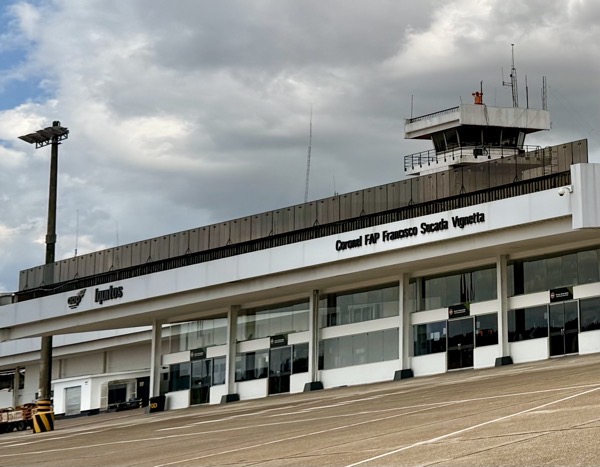 Coronel FAP Francisco Secada Vignetta International Airport
Coronel FAP Francisco Secada Vignetta International Airport
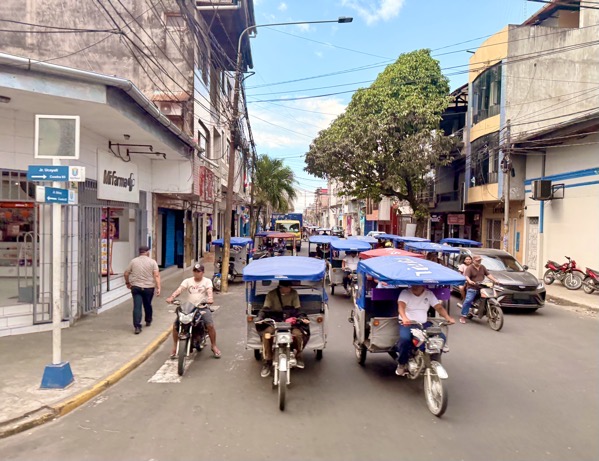 Getting around Iquitos
Getting around Iquitos
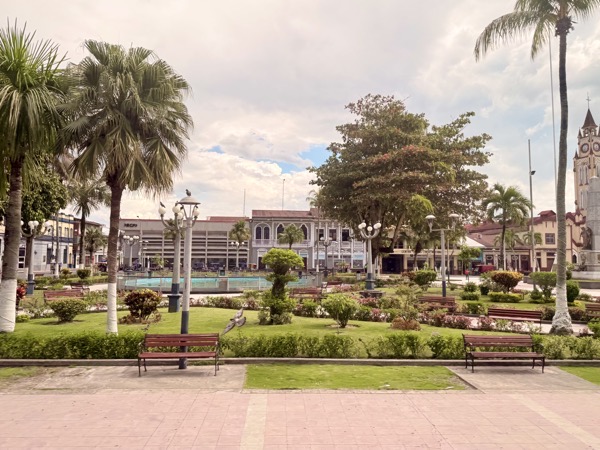 Park in Iquitos
Park in Iquitos
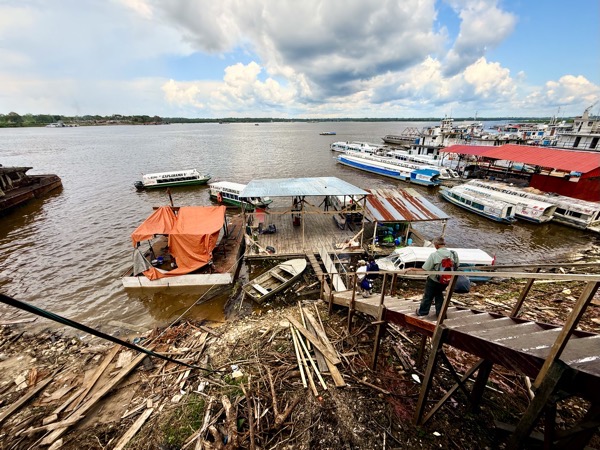 Explorama Docks on the Amazon River
Explorama Docks on the Amazon River
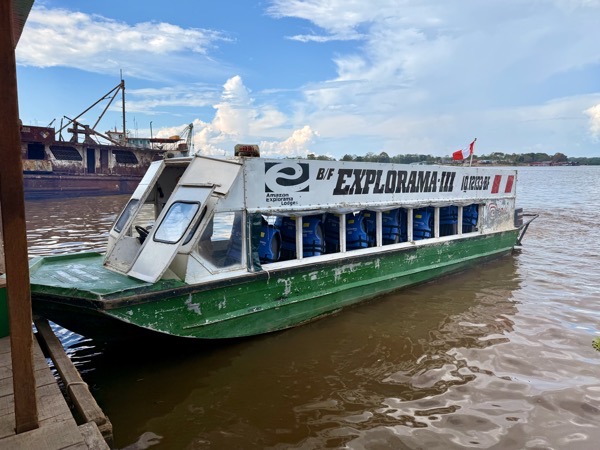 Our Ride to the Lodge
Our Ride to the Lodge
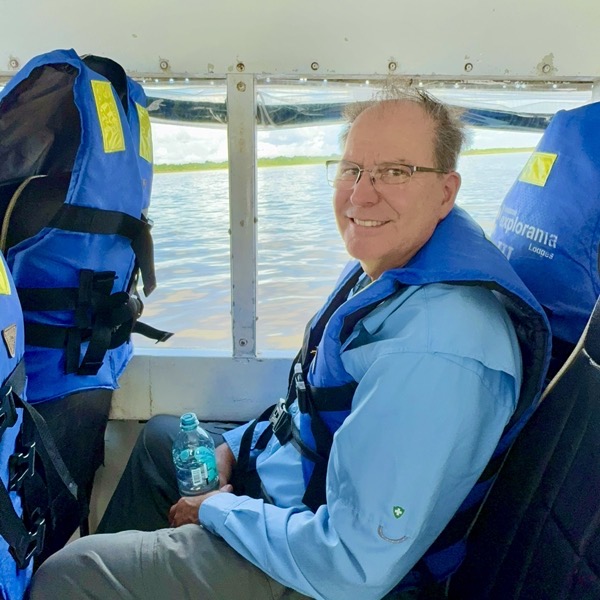 Ready to Cruise
Ready to Cruise
After a 45-minute ride down the wide, brown waters of the Amazon River — during which we ate a boxed lunch — we arrived at our home for the next four nights, Ceiba Tops Lodge. We disembarked and carried our bags up a set of stairs from the riverbank into the thatched-roof main building, which housed the registration lobby, bar, and dining room.
Upon arrival, we were welcomed with a refreshing local drink called chicha morada, made from purple corn. As we sipped the drink, we sat together while German gave us a brief orientation to the lodge and its amenities.
Afterward, we followed a wooden boardwalk through the rainforest to our 4-plex cabin, where John took one unit and we took an adjacent one. We had about half an hour to settle into our comfortable, air-conditioned room and freshen up before regrouping with German at 4 p.m. for our first rainforest hike.
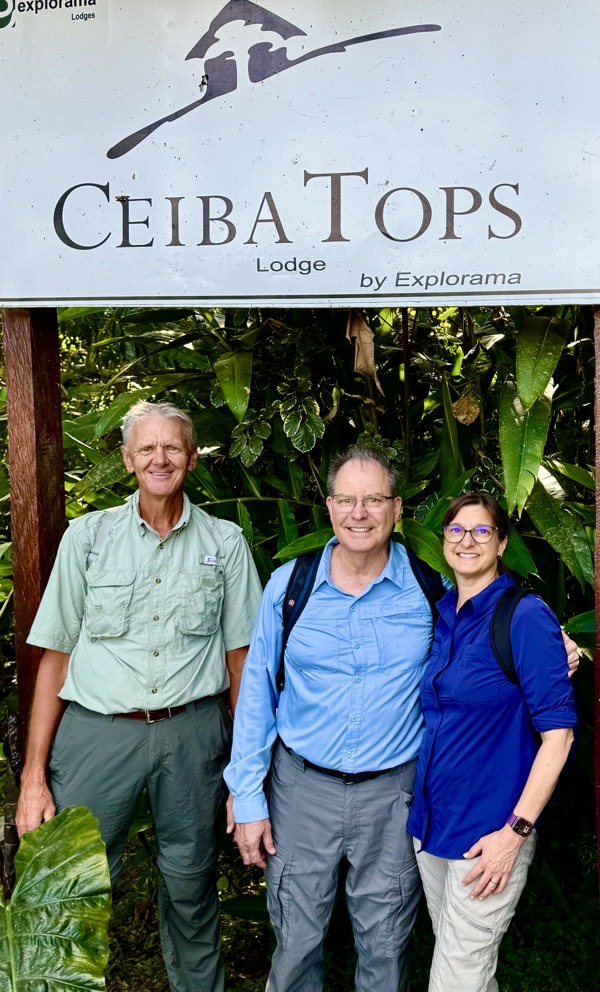 Arrival at Ceiba Tops Lodge
Arrival at Ceiba Tops Lodge
We set off for our walk into the rainforest. As we ventured along the trail, German pointed out various plant and bird species, as well as monkeys, toads, and massive termite nests tucked into the trees.
The highlight of the walk came when we reached a clearing and found ourselves face-to-trunk with the towering Ceiba tree (Ceiba pentandra), the namesake of the lodge. It was a truly awe-inspiring moment, standing beneath this massive, buttressed tree , which had narrowly been spared from logging during a last-minute negotiation. Its immense size and presence seemed to radiate quiet authority over the surrounding forest.
We continued walking for a while longer, until German—ever the experienced guide—advised us to turn back due to an approaching rainstorm. His timing was perfect.
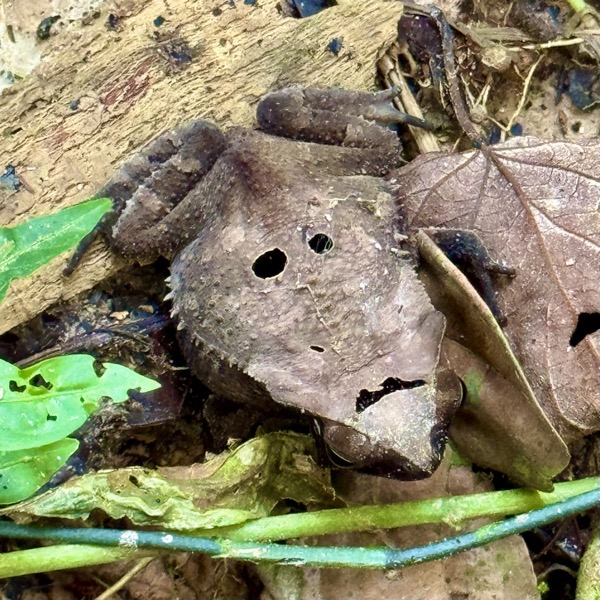 Leaf-Litter Toad (Rhinella margaritifera)
Leaf-Litter Toad (Rhinella margaritifera)
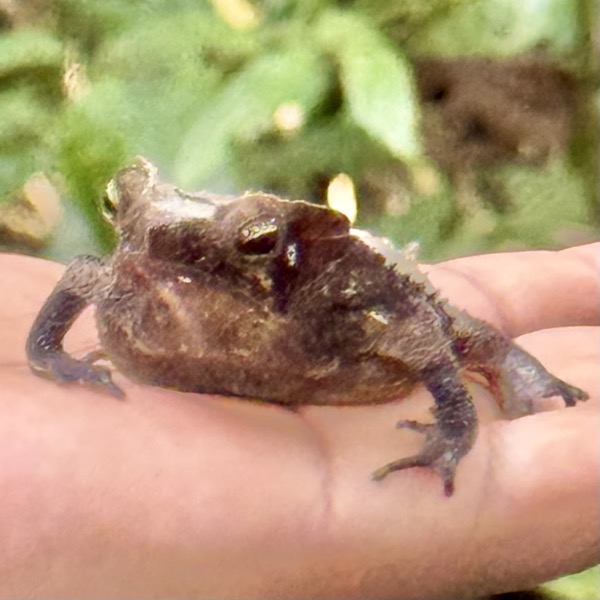 Leaf-Litter Toad in German’s Hand
Leaf-Litter Toad in German’s Hand
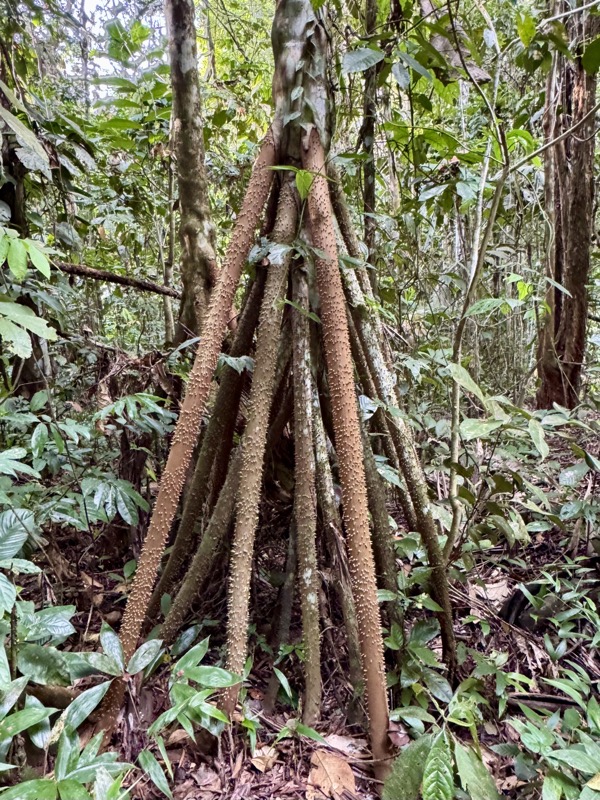 Walking Palm (Socratea exorrhiza)
Walking Palm (Socratea exorrhiza)
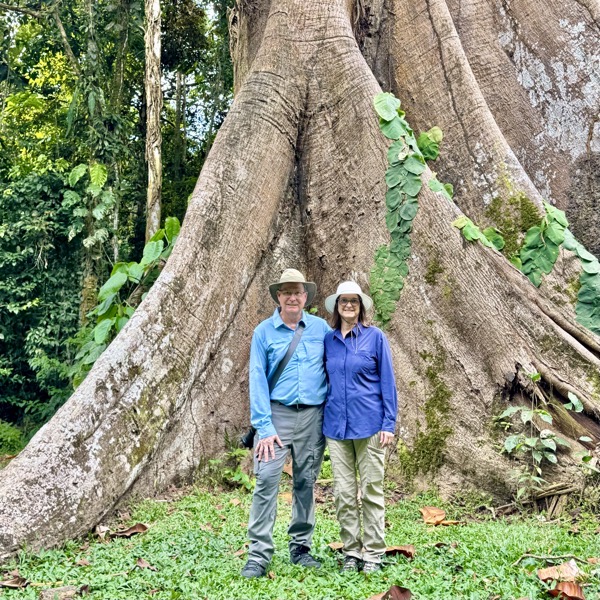 Buttress of the Ceiba Tree (Ceiba pentandra)
Buttress of the Ceiba Tree (Ceiba pentandra)
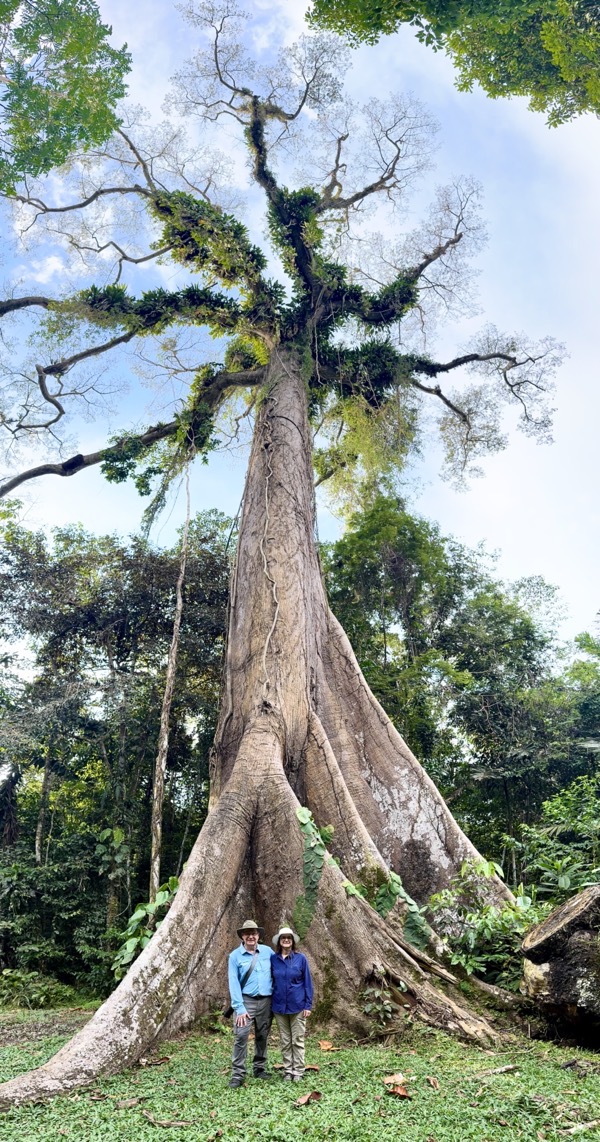 The Impressive Ceiba Tree
The Impressive Ceiba Tree
Back at our room, we had some time to rest before dinner at 7 p.m. We headed over a little early to grab a drink at the bar and sit at a small table with John for a chat. Shortly after, German arrived to guide us to our table and direct us through the expansive buffet.
The dinner was excellent, featuring several types of fish, rice and beans, shredded hearts of palm—referred to locally as the “spaghetti of the Amazon”—along with a variety of salads and other fresh vegetables.
After the meal, German gave us a quick briefing about the next day’s schedule. Plans had shifted: we would be swapping Sunday’s and Monday’s activities, and needed to meet for breakfast at 6:00 a.m., with departure by boat at 6:30 sharp.
With that, we made our way back to the cabin and gratefully settled in for the night. Sleep was most welcome after a full and fascinating day.
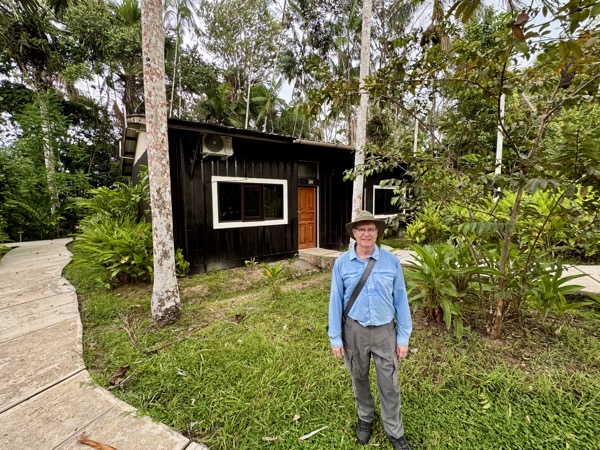 Our Room’s Cabin
Our Room’s Cabin
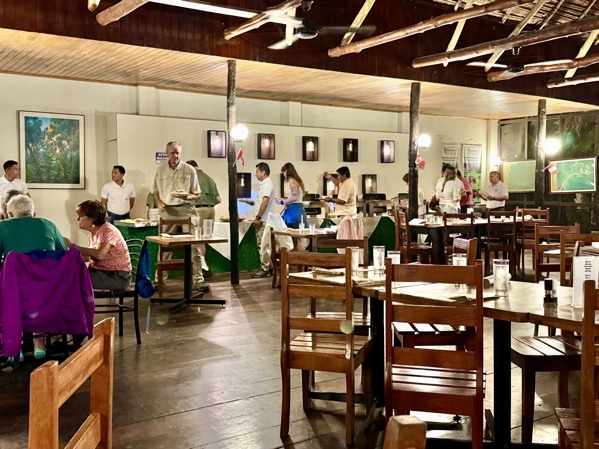 Dining Room at Ceiba Lodge
Dining Room at Ceiba Lodge